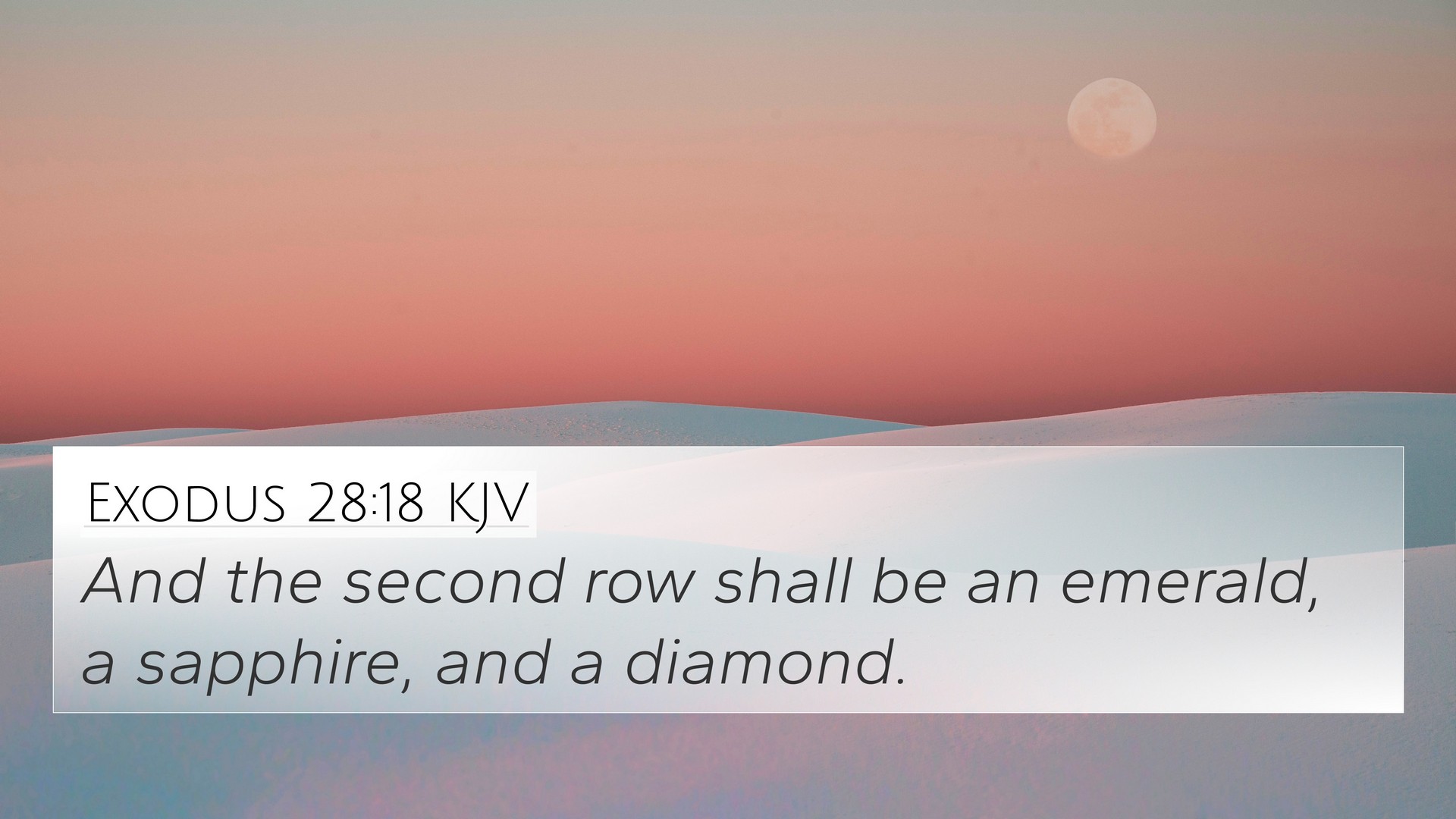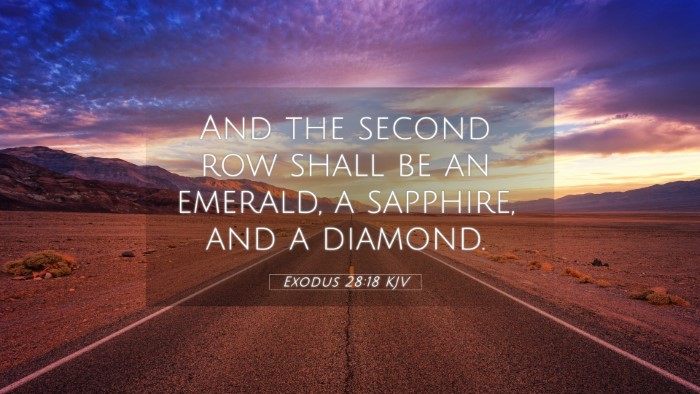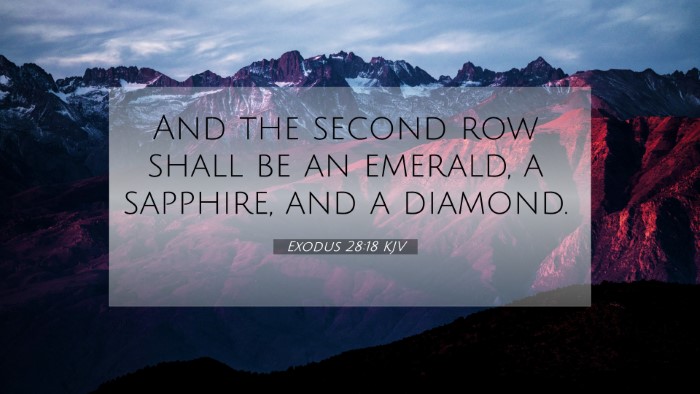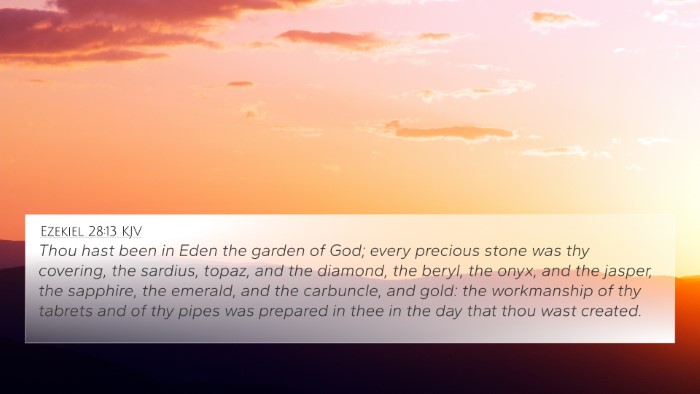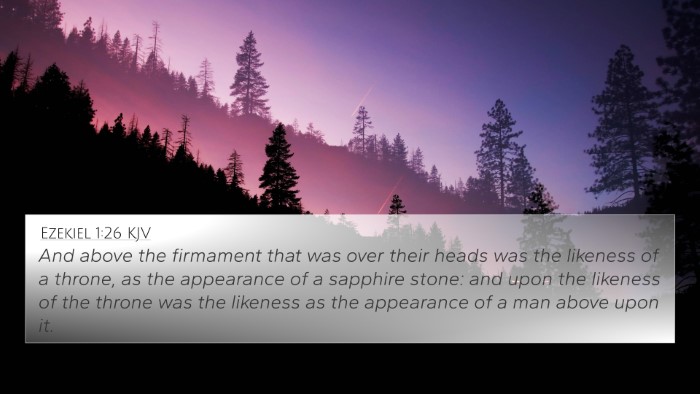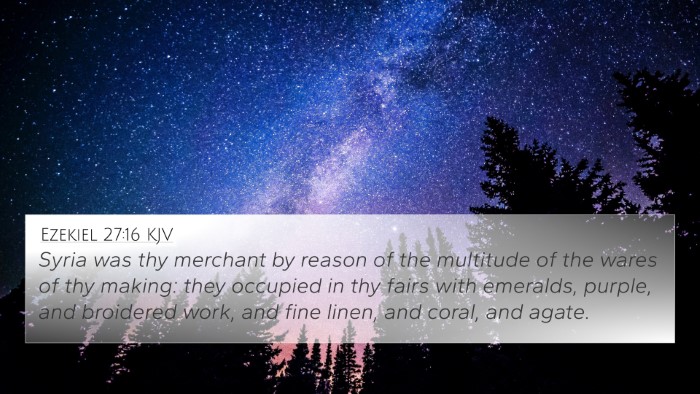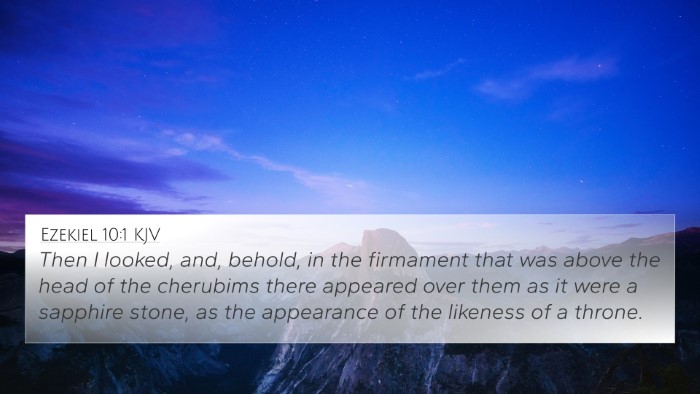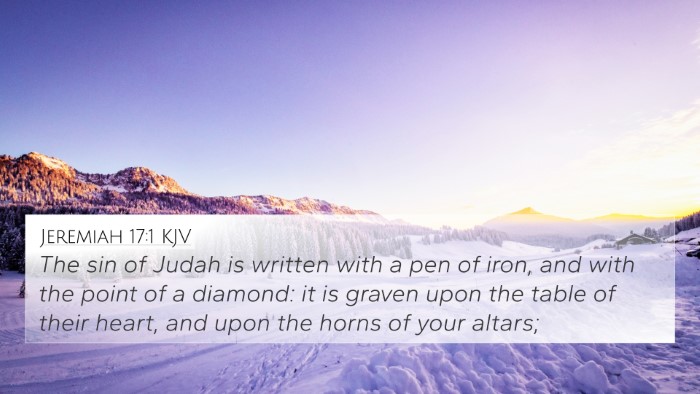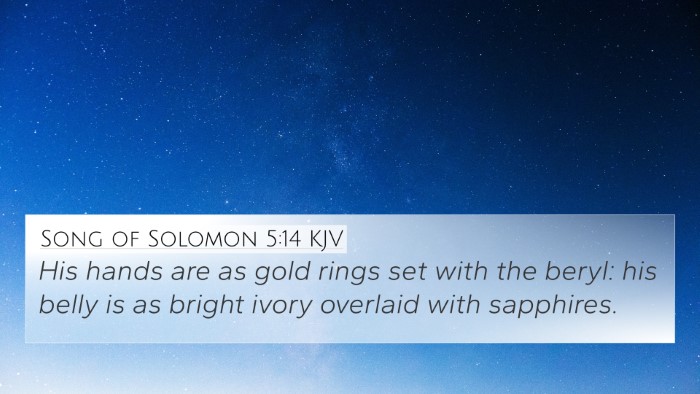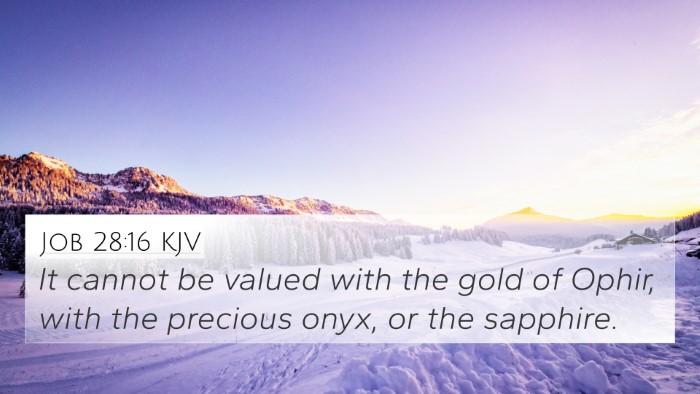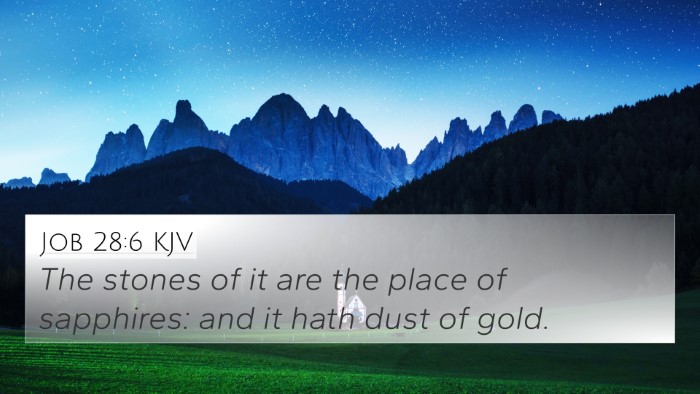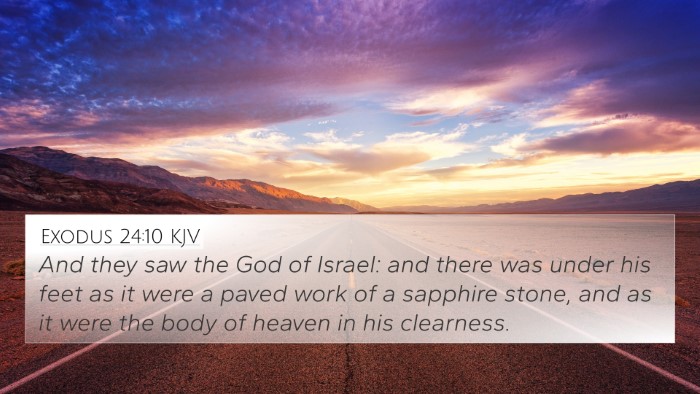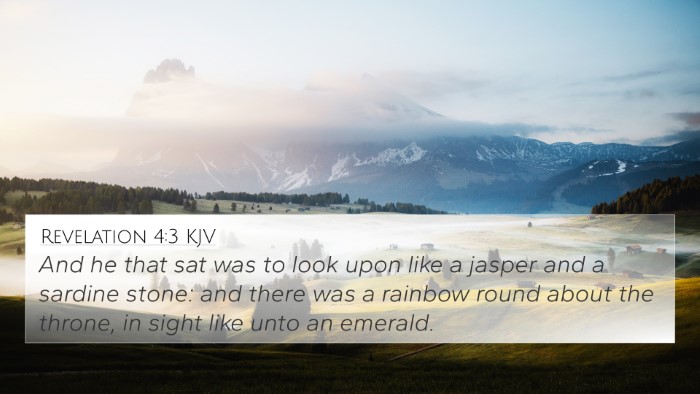Understanding Exodus 28:18
Exodus 28:18 states: "And the second row shall be a garnet, a purple, and a beryl." This verse is part of a description of the breastplate of judgment worn by the high priest in ancient Israel. The breastplate was adorned with twelve stones, each representing one of the twelve tribes of Israel.
The rich symbolism of these stones and their arrangement offers deep insights into God's relationship with His people. The details, including the types of stones and their colors, serve to emphasize the significance of the high priest's role as an intermediary between God and the Israelites.
Commentary Insights
Matthew Henry notes that the stones represent the tribes and that the high priest bore them as a continual reminder of the people before God. The high priest carried the names of the tribes, indicating the importance of representing the nation before the Lord.
Albert Barnes emphasizes the symbolism behind the stones. He relates that they reflect beauty and diversity, which illustrate the varied yet unified nature of God's chosen people. Each tribe had its own distinct identity, yet they were all part of a greater whole. The stones also signify the preciousness of the people to God.
Adam Clarke highlights the significance of the colors and materials used for the breastplate. He suggests that the choice of gemstones signifies not only beauty but also the divine care God has for His people. Each stone could represent struggles and victories of the respective tribes.
Key Themes and Interpretations
- Representation: The high priest's role is a powerful example of intercession. Just as the priest represented Israel, believers today have Christ as their intercessor before God.
- Diversity in Unity: The different stones symbolize the unique qualities of each tribe while emphasizing their unity as God's chosen people. This theme resonates deeply within the body of Christ, where each member contributes to the whole.
- Divine Presence: The arrangement of the stones serves to remind Israel of God's constant presence among them, akin to how believers are always under God's grace and guidance in the New Testament.
Cross-References and Connections
Exploring related verses can enhance understanding of Exodus 28:18 through Bible verse cross-references. Here are some significant cross-references:
- Exodus 28:21: “And the stones shall be with the names of the children of Israel, twelve, according to their names...” - Establishes the connection of the stones to the tribes.
- 1 Peter 2:9: “But you are a chosen generation, a royal priesthood...” - Expands on the role of believers as a priesthood, linking the Old Testament practice to the New Testament.
- Revelation 21:19-20: “And the foundations of the wall of the city were garnished with all manner of precious stones...” - Draws parallel between the precious stones in the breastplate and the foundations of the New Jerusalem.
- Philippians 4:5: “Let your moderation be known unto all men...” - Relates to the importance of exemplifying God’s character and the beauty of the faith community.
- Numbers 1:44-46: “These are those that were numbered...” - Highlights the significance of the tribes as a collective in God’s plan.
- Isaiah 43:1: “Fear not: for I have redeemed thee, I have called thee by thy name; thou art mine.” - Reinforces the personal nature of God’s relationship with His people.
- Romans 12:4-5: “For as we have many members in one body...” - Discusses the importance of unity within diversity, reflecting the arrangement of the tribes.
- Matthew 5:14: “You are the light of the world...” - Illustrates the call for God’s people to reflect His glory, similar to how the high priest displayed the stones.
- Hebrews 4:14: “Seeing then that we have a great high priest...” - Mentions Christ as our high priest, further connecting the Old Testament practice with New Testament theology.
- Colossians 3:12: “Put on therefore, as the elect of God, holy and beloved...” - Encourages believers to embody the virtues represented in the high priest’s attire.
Thematic Bible Verse Connections
The themes presented in Exodus 28:18 open avenues for further exploration of connections between Bible verses. These connections illustrate the continuity of God’s plan from the Old Testament through the New Testament. Engaging in a Comparative Bible verse analysis allows for deeper understanding:
- Interceding High Priest: Drawing parallels from Exodus 28:18 to Hebrews 4:14-16, we see the fulfillment of the high priest role in Christ, who intercedes for humanity.
- Valued Children: Reflecting on God’s care for His people as seen in Isaiah 43:1 and resulting in the precious stones of Exodus signifies His deep love and commitment.
- Unity of Believers: Just as the tribes represented in the breastplate reflect diversity, Ephesians 4:4-6 reinforces the idea of unity among believers.
Conclusion
In sum, Exodus 28:18 encapsulates profound truths about God’s relationship with His people. The application of scripture through cross-referencing Biblical texts enables readers to see the interwoven tapestry of God's message throughout the Bible.
By understanding the symbolism behind the verse, we can appreciate the overarching narrative that emphasizes God's desire for relationship, representation, and ultimately redemption through Christ.
